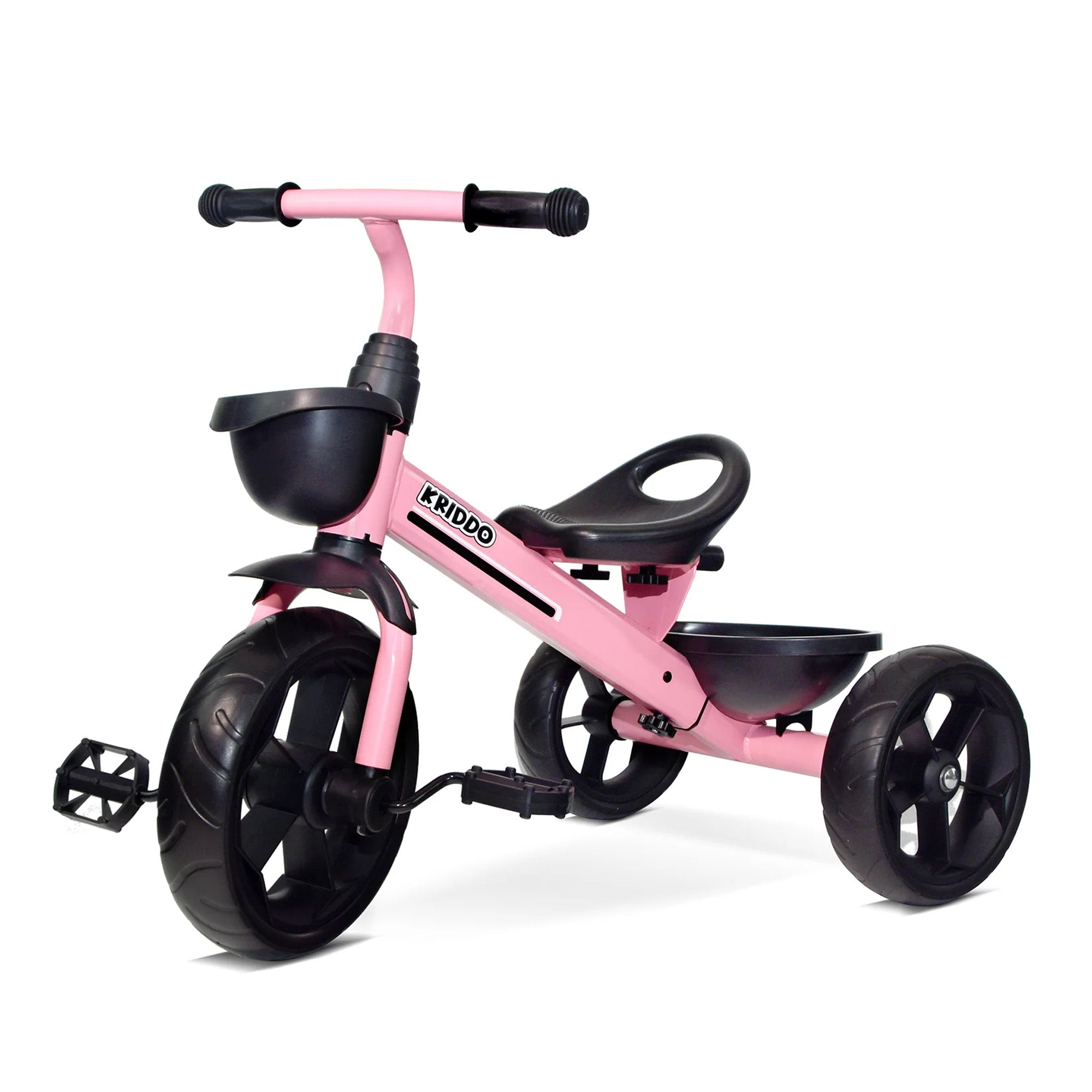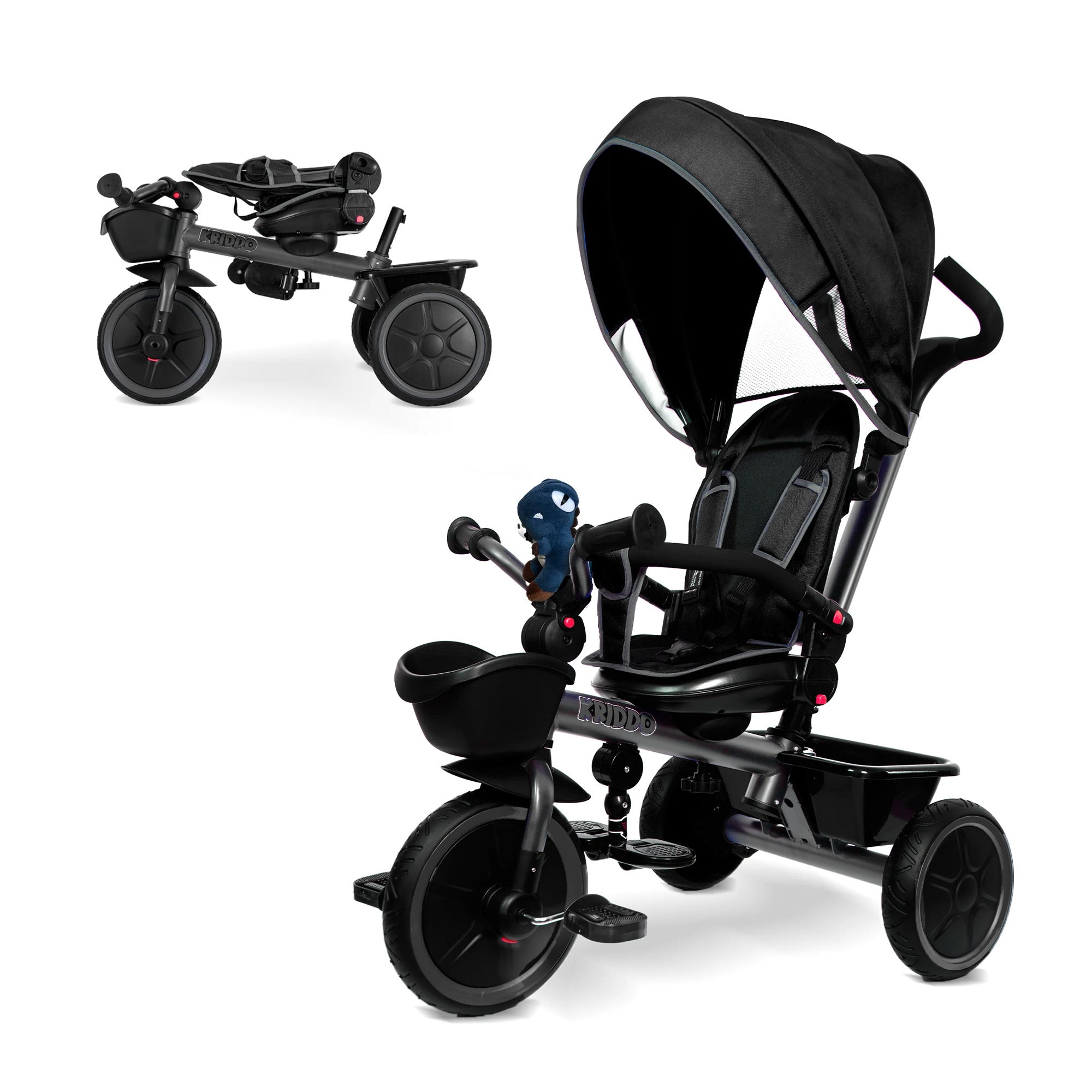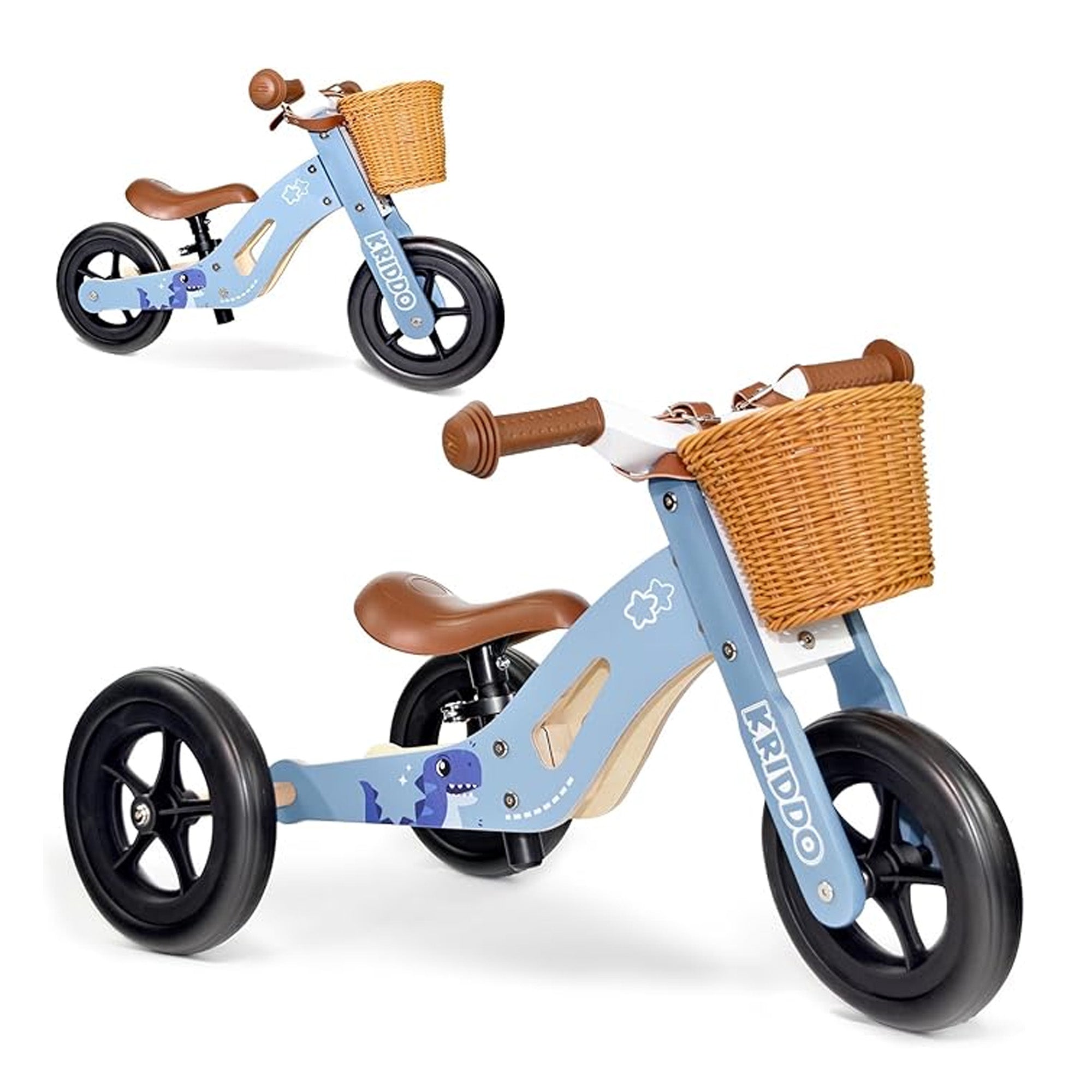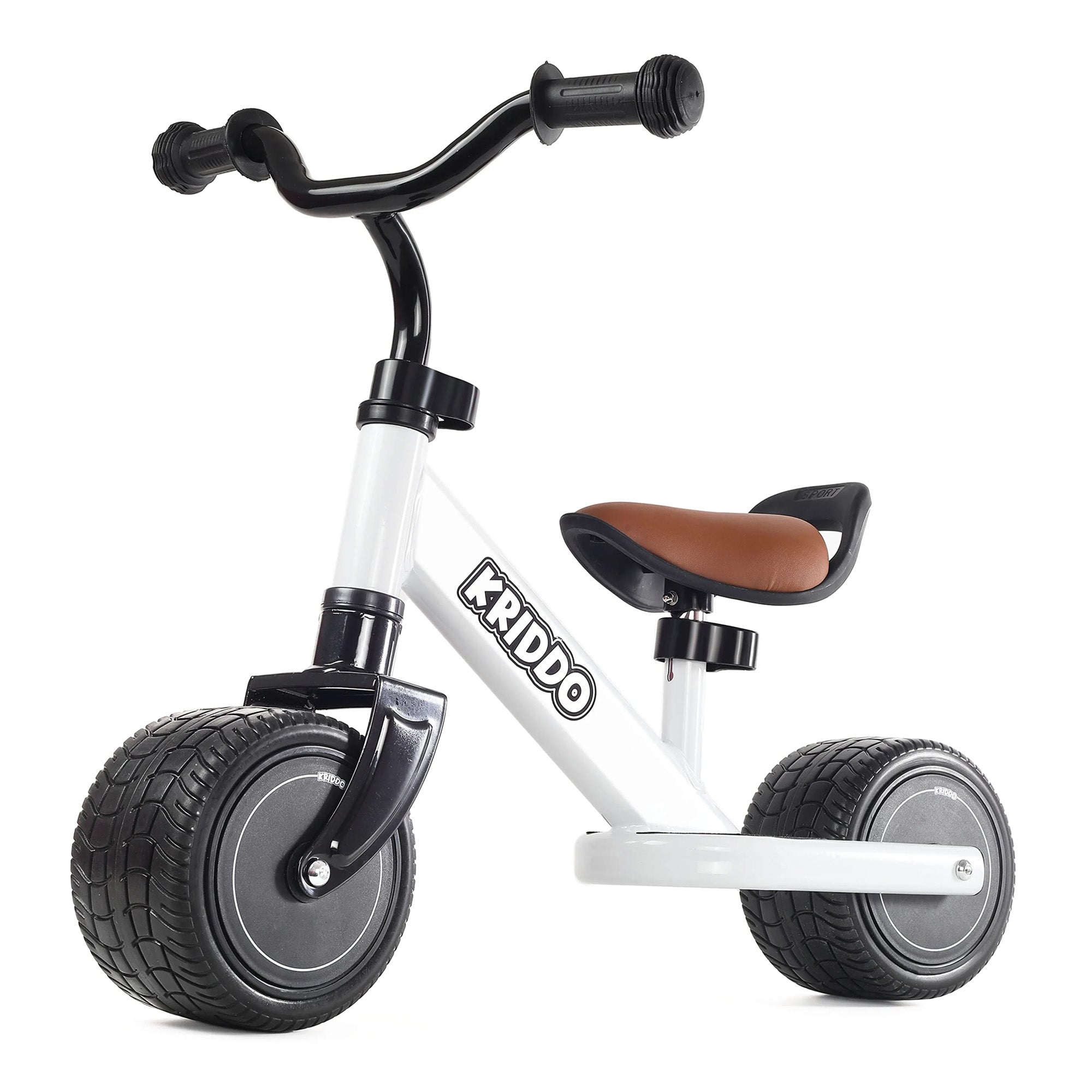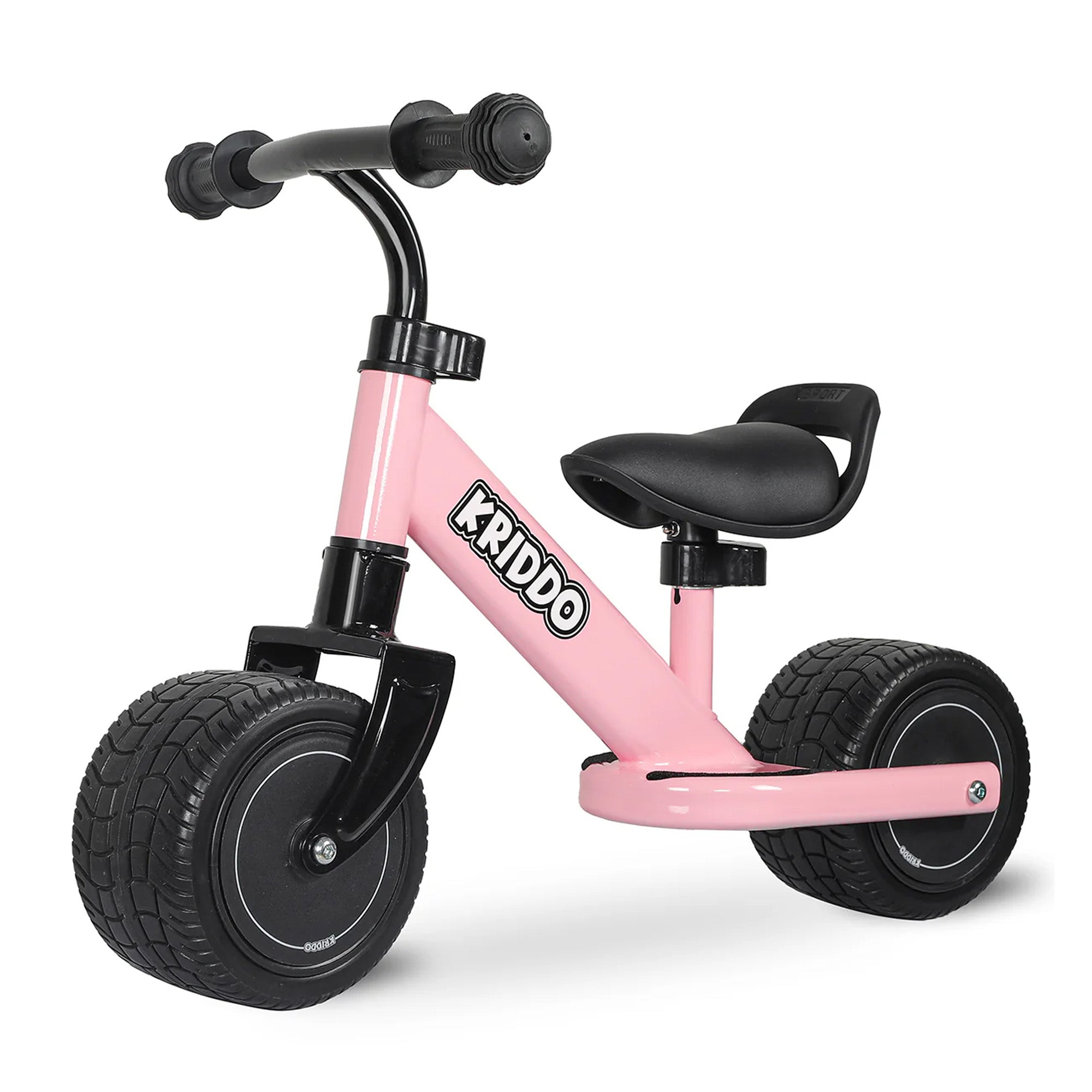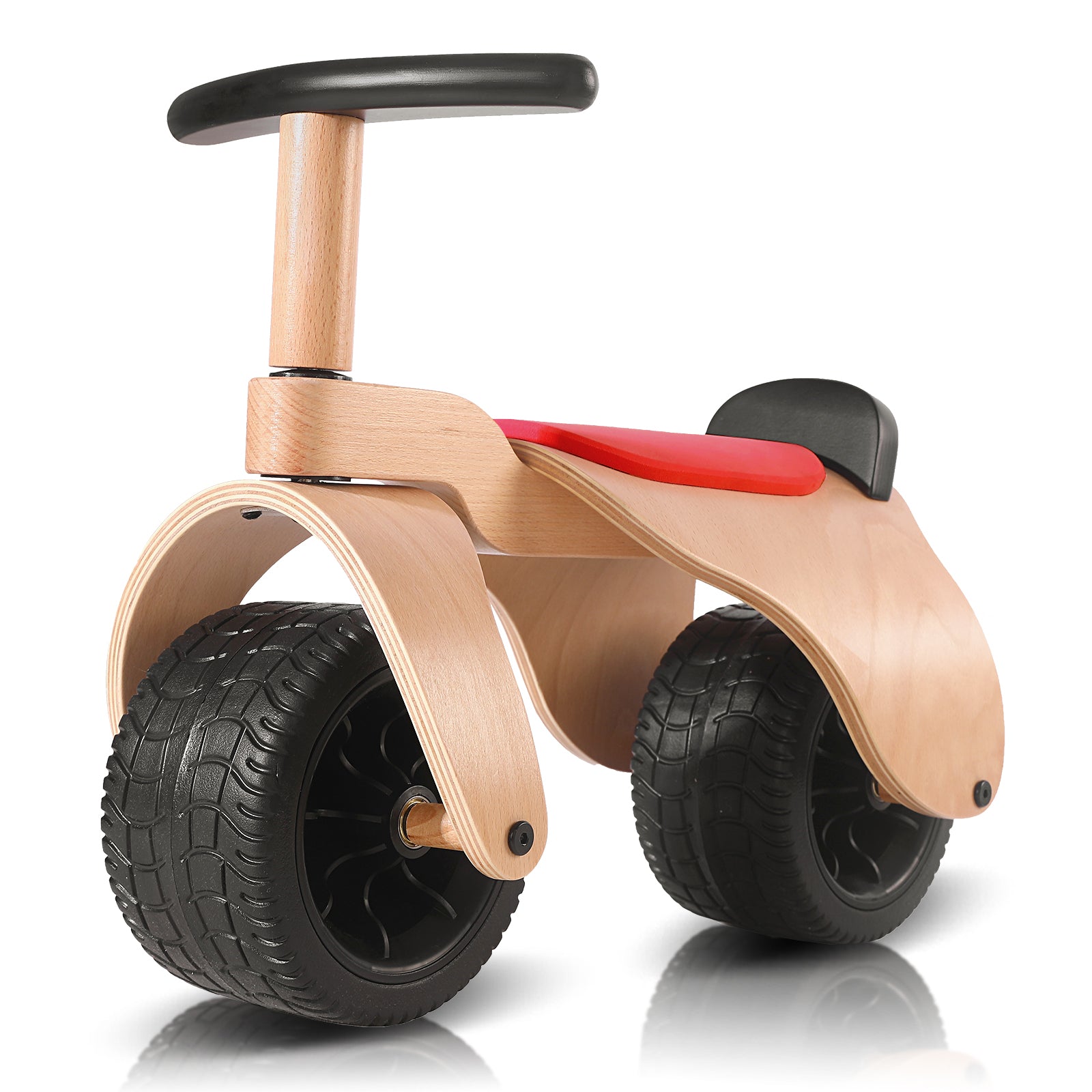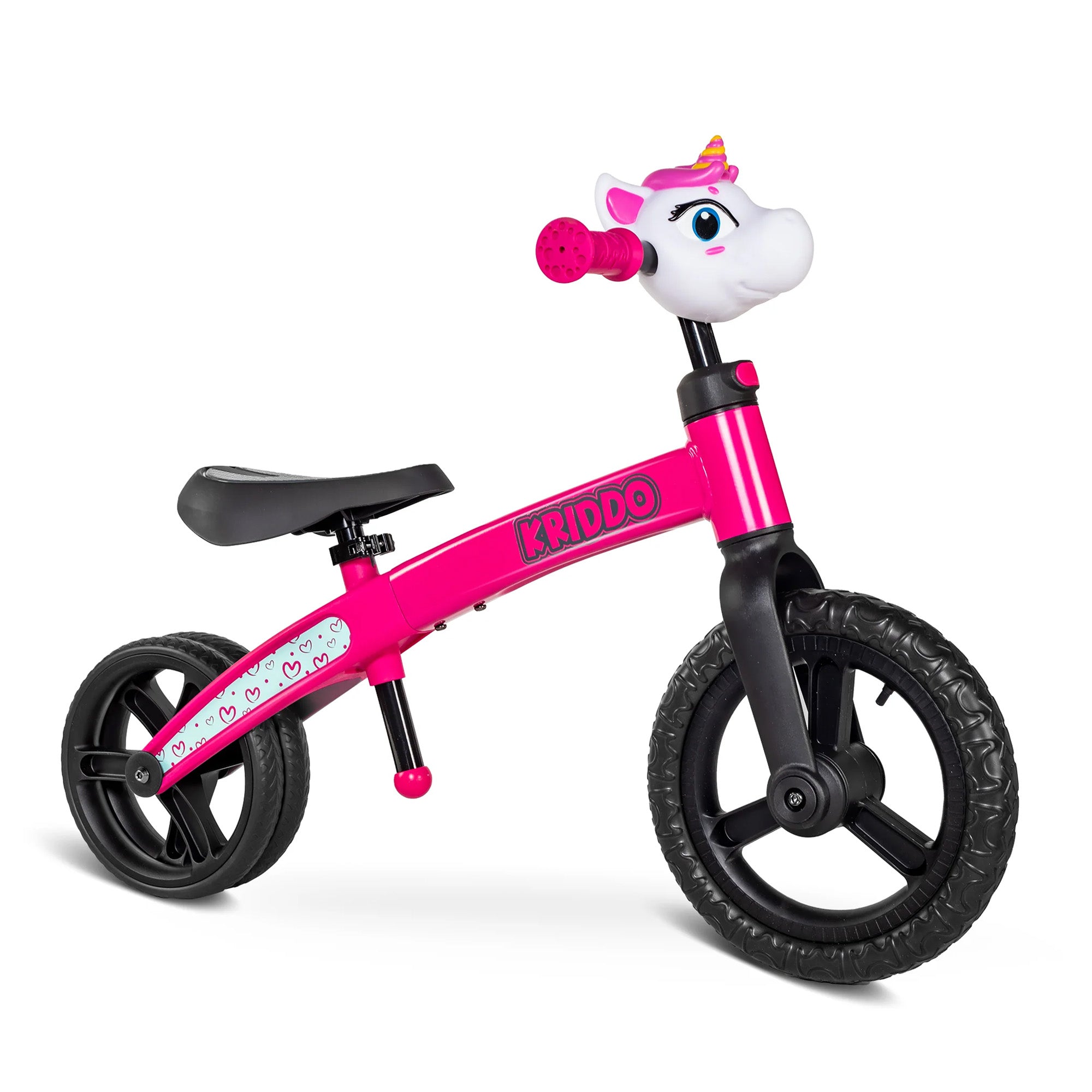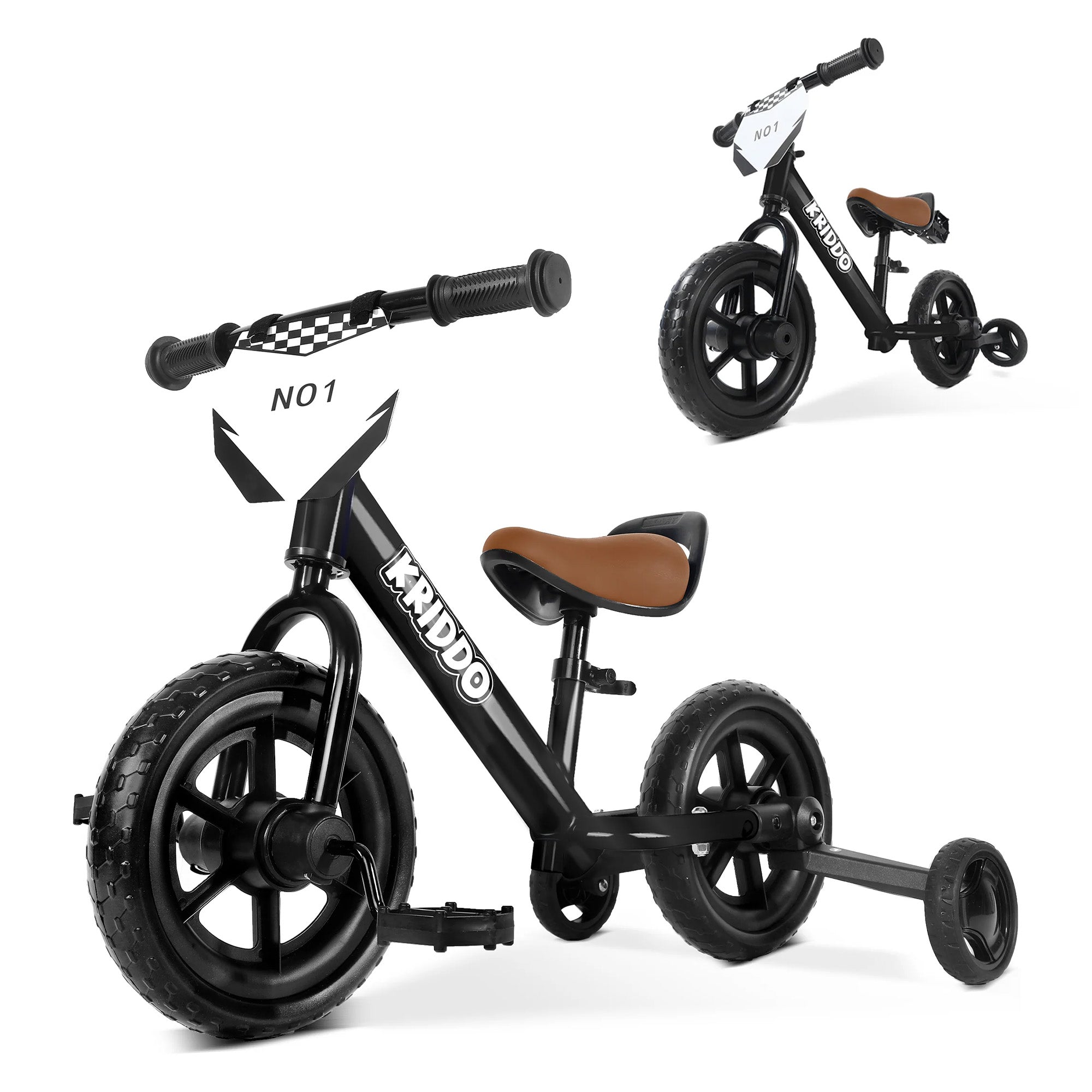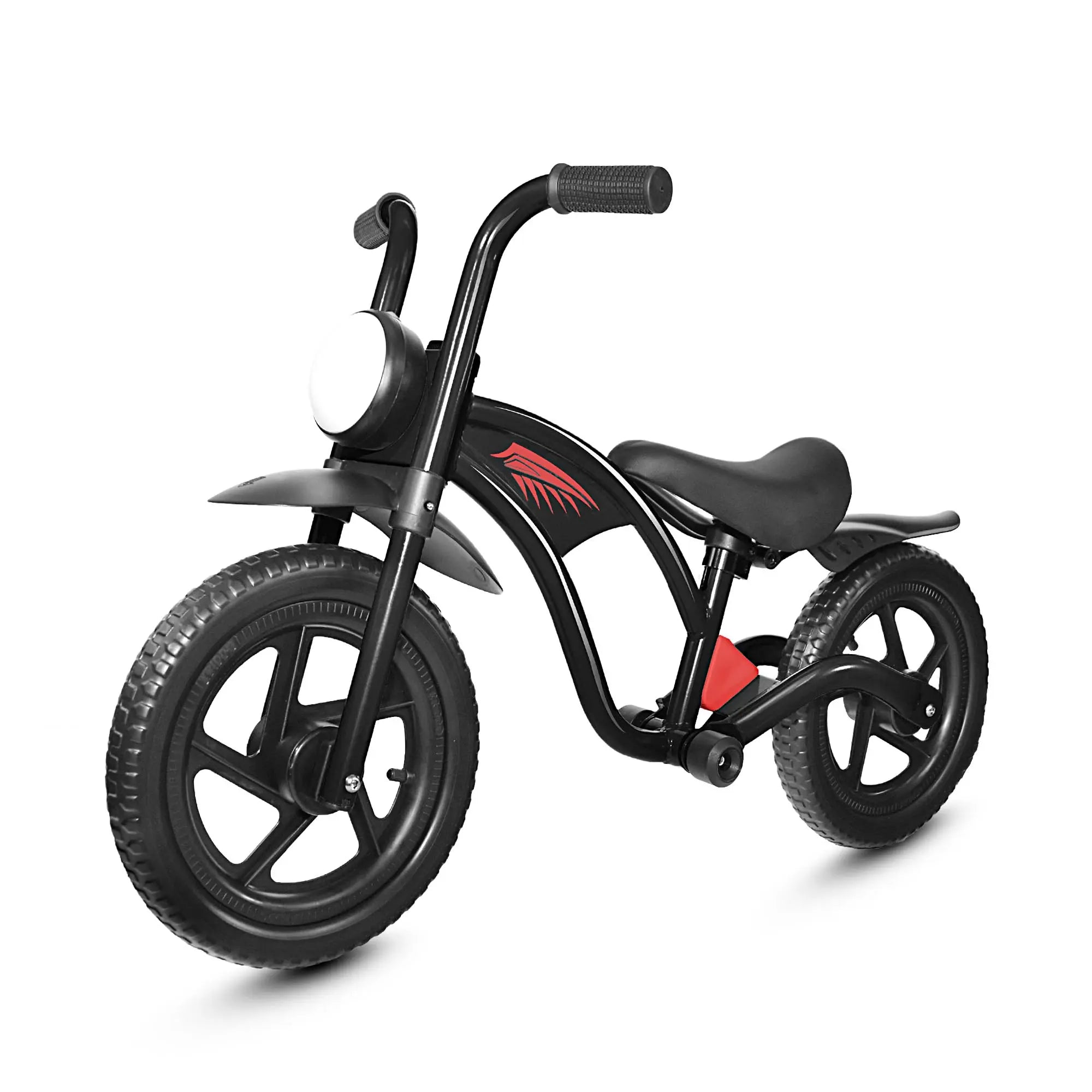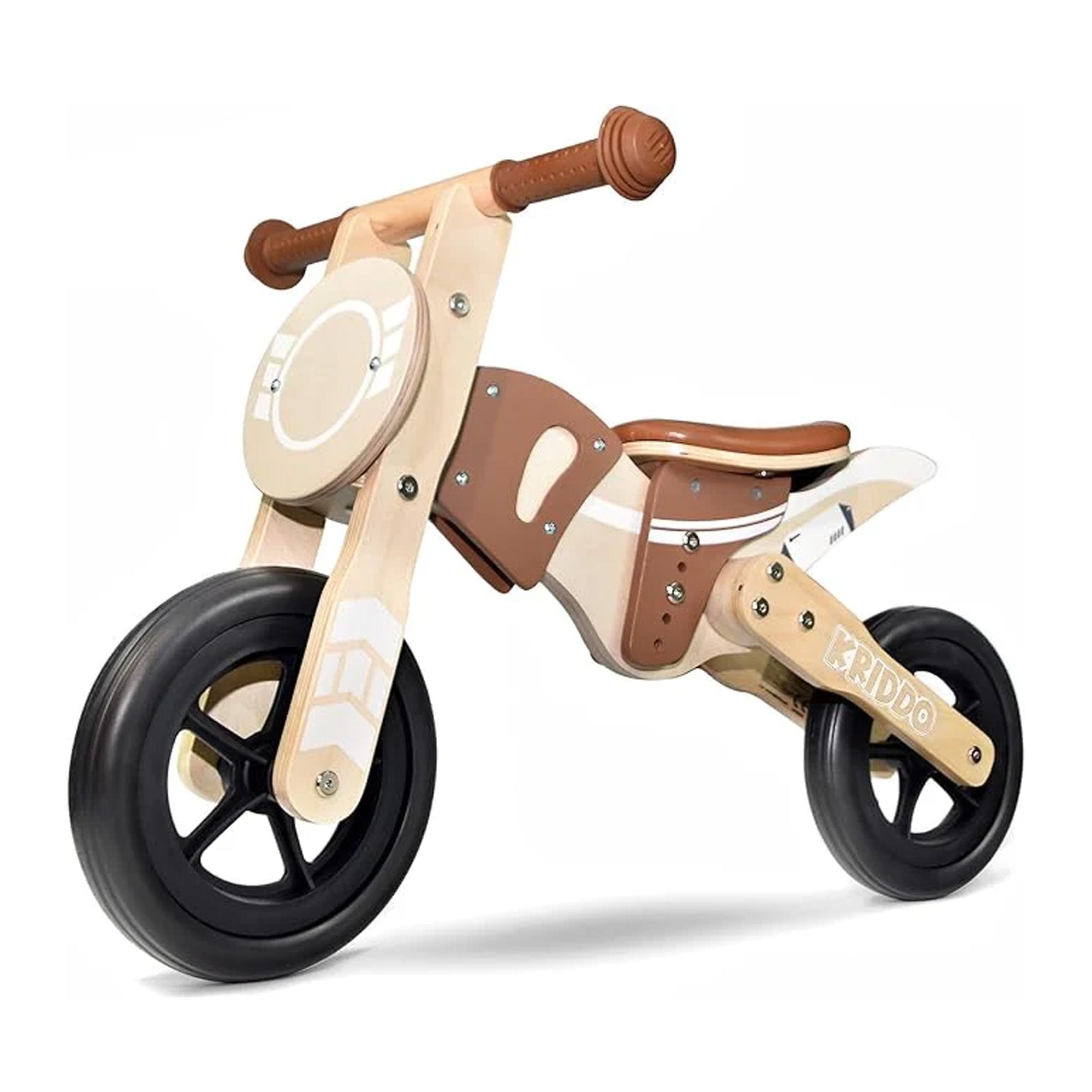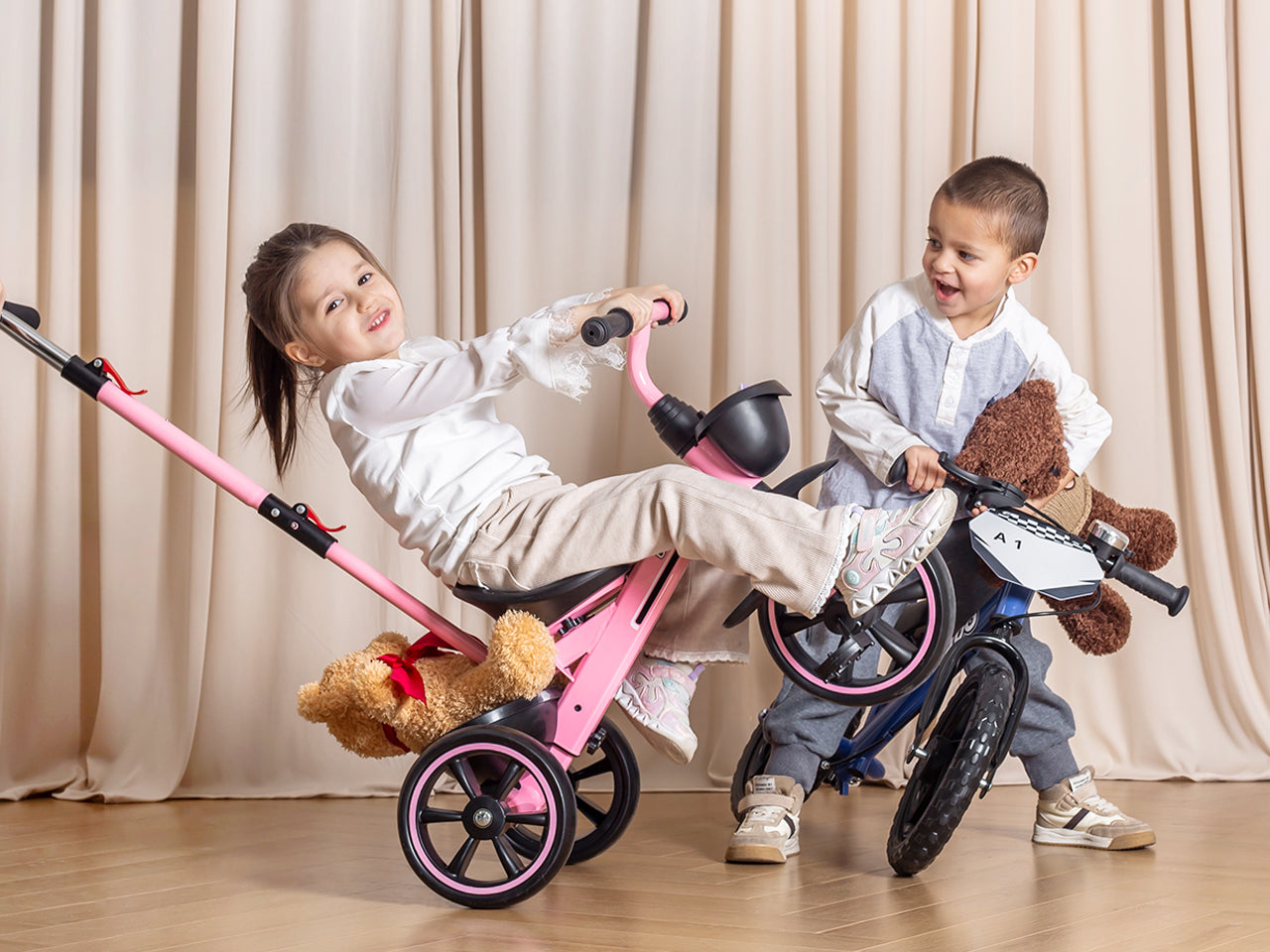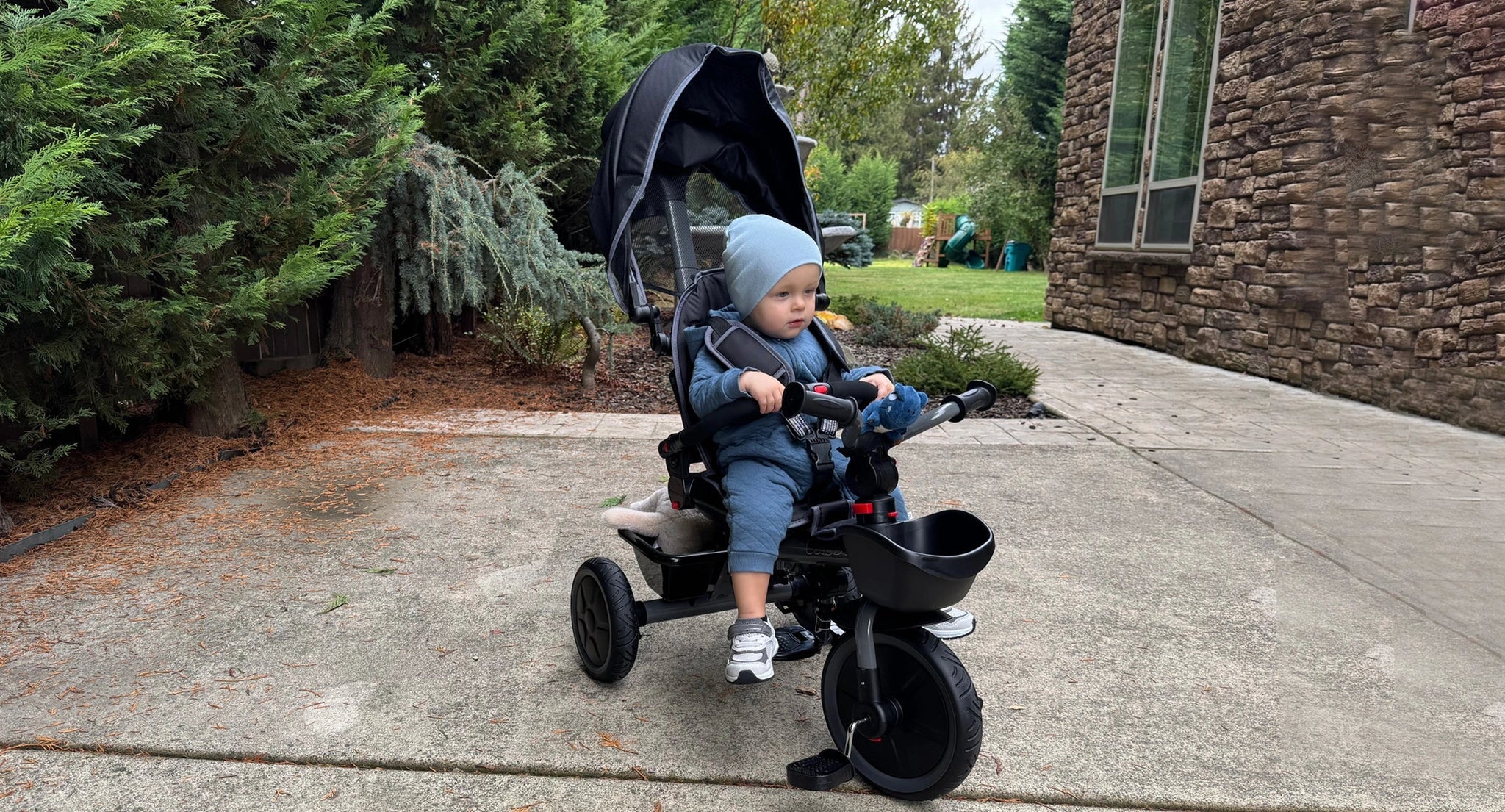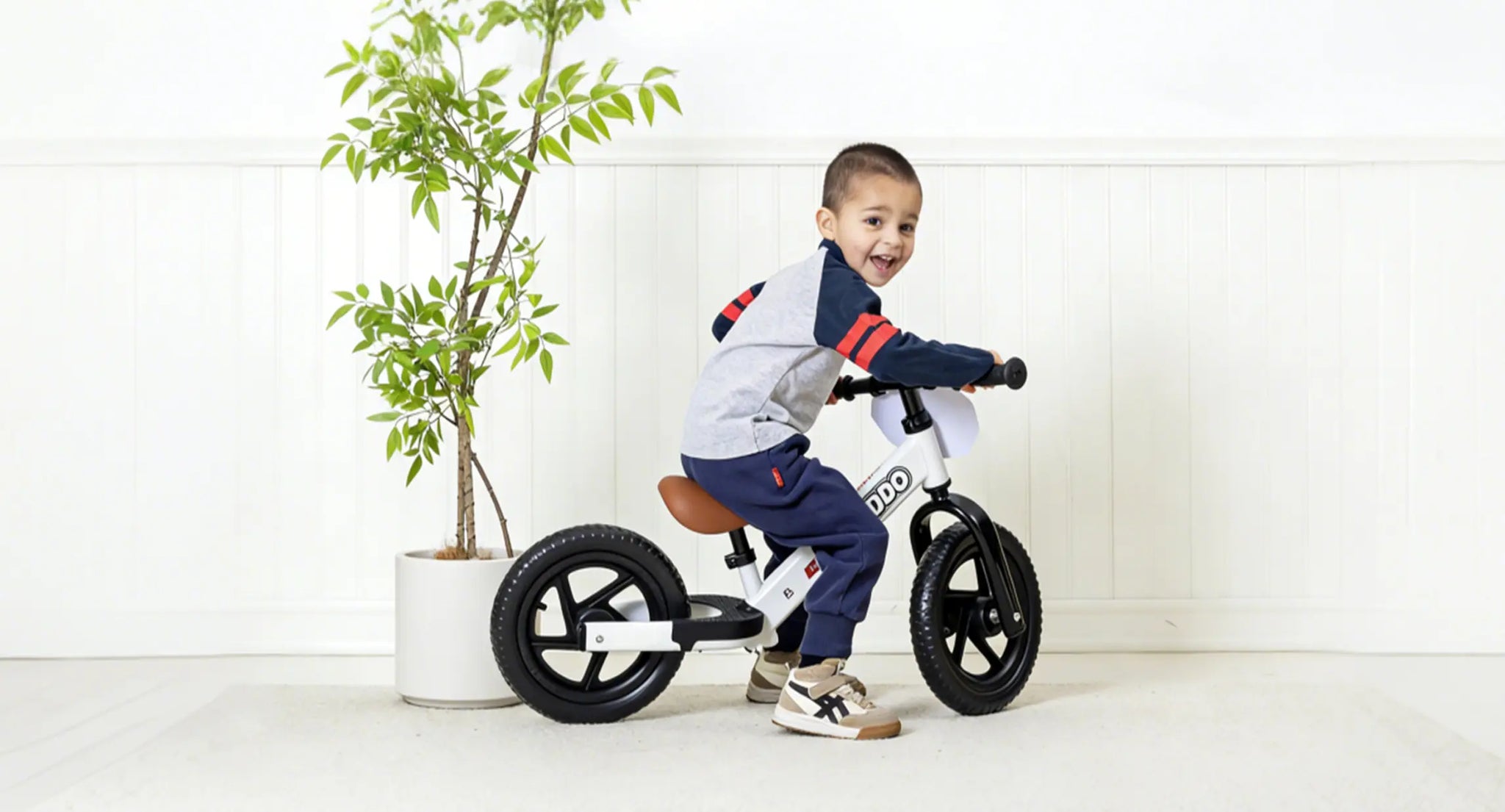The Ultimate Balance Bike Guide for Toddlers
Everything You Need to Know Before You Buy
Coco, 13th Aug
If you’ve ever spotted a toddler gliding effortlessly across the playground on a tiny bike with no pedals, you know how captivating it looks. There’s a sparkle in their eyes, a confident tilt of the shoulders, and sometimes even a squeal of joy as they roll past. That’s the charm of a toddler balance bike — part toy, part training tool, and part secret weapon for parents who want their kids to master cycling without tears or training wheels.
For many families, it’s not just a seasonal present — it’s one of the best gifts for kids. It gives children freedom, builds their confidence, and fosters a love for movement that will follow them for years. And unlike toys that gather dust in the corner, a balance bike earns its keep. It’s used in driveways, on sidewalks, at parks, on family outings, and even in balance bike races.
In this Ultimate Balance Bike Guide, we’ll cover:
- What a balance bike is and why it works so well
- The surprising benefits for your toddler’s body and mind
- The 4 key learning stages every young rider experiences
- How to choose the perfect bike (with size, weight, and feature tips)
- Recommended models for every budget and style
- Why starting with a balance bike sets them up for lifelong cycling success
Along the way, you’ll find expert tips, real-world examples, and helpful KRIDDO resources — so you can make the most informed decision.
1. What Is a Balance Bike?

A balance bike is a lightweight, pedal-free bicycle designed specifically to teach children balance, steering, and control before they move on to a traditional pedal bike. Instead of pedaling, kids sit on the saddle and use their feet to push themselves forward, making balance the primary focus. This approach not only helps toddlers gain confidence in their movements, but it also lays the foundation for pedaling later on.
Understanding how these bikes encourage development can really highlight why they’ve become such an essential tool for young children. Here’s the essence:
No pedals, no distractions – Without pedals, there’s no need to coordinate complex movements from the start. Kids focus solely on staying upright and steering.
Balance-focused learning – Some parents often skip teaching true balance. Balance bikes make it the core skill.
Early start possible – Many toddlers as young as 18 months can ride, whereas pedal bikes typically require more strength and coordination.
Light and manageable – They’re easy for small hands to handle, even on uneven terrain.
Smooth transition to pedal bikes – By the time they’re ready, they often skip training wheels altogether.
It’s a design that makes learning feel natural. Starting early with a balance bike gives toddlers a confidence boost, helping them develop crucial skills and independence—exactly why it's so beneficial for a 2-year-old.
2. Why a Toddler Balance Bike Is Worth It: Benefits Beyond Cycling

Sure, it’s adorable to watch them scoot around, but the benefits go far deeper. A toddler balance bike is like a portable gym and life-skills workshop rolled into one.
2.1 Physical Development
When it comes to growing healthy habits on a toddler balance bike, we explain how riding:
Improves balance and coordination – Toddlers learn to adjust their body position to keep the bike stable.
Strengthens muscles – Pushing off works the legs, hips, and core.
Builds agility – Navigating obstacles sharpens reaction times.
Enhances gross motor skills – The combined motion of steering, leaning, and stopping is a full-body workout.
For a complete breakdown of physical gains, check balance bike benefits.
2.2 Cognitive and Emotional Growth
Confidence boost – Few things light up a child’s face like mastering a glide for the first time.
Independence – They decide where and how to ride, building self-reliance.
Spatial awareness – They learn how their body and bike interact with surroundings.
Problem-solving – Each ride involves quick decisions about speed, direction, and obstacles.
3. The Stages of Balance Bike Learning

One of the most comforting things for parents to know is that learning to ride a toddler balance bike follows a natural progression. Your child doesn’t have to get it “right” on day one — and in fact, most don’t. These stages help you understand what’s normal, what’s next, and how you can support them at every step.
Step 1: Rise and move
At this early stage, toddlers typically straddle the bike and walk it forward. They may not sit at all — and that’s completely fine. They’re simply getting familiar with the feel of the frame, the handlebars, and the concept that this is their ride.
Some children might push it around like a favorite toy, not even attempting to climb on just yet.
How long does this stage last? It can vary greatly. Some kids move past it in a day, while others might spend months in this phase, particularly if they start at a younger age.
Your role is to let them lead. Resist the urge to push them to sit and ride. Offer opportunities to explore, and try to limit distractions from other activities, which can redirect them to less effective learning habits.
During this time, tantrums are a natural part of the process, but staying calm and patient is key. Understanding how to handle those moments can make a big difference in helping your toddler stay motivated without frustration.
Step 2: Take a seat and stroll
Now they’re ready to sit in the saddle — but still move slowly, using short, careful steps. This is when curiosity starts to kick in.
They begin to notice that other kids are going faster. Competitive toddlers may try to keep up, while more cautious ones will stick to a slow pace until they feel secure.
If you have access to a group of balance bike riders, this is a great time to let your child watch or join in. Peer influence is powerful. In many cases, just seeing another child glide a few meters is enough to inspire a breakthrough.
Step 3: Relax, run, and hold your balance
Here’s where things get exciting. They start running while seated, lifting their feet briefly, and experiencing their first moments of balance without support.
For adventurous kids, this stage can arrive within days of Stage 2. For the more cautious, it may take weeks.
At this point, the idea of “speed” becomes appealing. You might hear little giggles or even joyful shouts as they coast along. Your job is to make sure the riding environment is safe and open enough for them to experiment.
Step 4: Rest, race, soar, and discover
The big finale: confident gliding with feet completely off the ground for several seconds at a time. The bike feels like an extension of their body, and they may start tackling gentle slopes, weaving between cones, or exploring new paths. This stage isn’t just about developing skill — it’s about experiencing freedom. Many children will happily stay on their balance bike for years, enjoying not only the fun but the versatility it offers. Preschool fun starts as early as age 2, and the joy they get from it can last far beyond those first few rides.
As they continue to grow, the bike becomes more than just a tool for learning balance. It’s an invitation to explore, a way to build confidence, and a perfect way to introduce the thrill of movement.
4. How to Choose the Right Toddler Balance Bike

A great learning experience starts with the right equipment. The wrong fit can frustrate your child, while the right bike will make them feel in control. Getting the right size balance bike is crucial for their comfort and development, allowing them to learn more effectively and enjoy the process.
Choosing the right size can make all the difference, and this is something that can’t be overlooked. But here are the essentials:
Weight
Go light. The average 3-year-old weighs around 14 kg; a heavy bike can be over 15% of their body weight, making it harder to handle. A lighter frame also makes it easier for you to carry home when little legs get tired.
Steering
Smooth steering is key. Look for ball-bearing headsets rather than simple bushings. Some bikes have steering limiters to prevent over-rotation, which can be helpful for beginners.
Brakes
Not essential for the youngest riders, but a hand brake can be a great tool for speed control as they grow. Just make sure the lever is sized for small hands.
Wheels
Durable foam tires tires offer the smoothest ride, especially on uneven ground. They’re also lighter and provide better grip.
Seat
Choose a comfortable, slightly scooped saddle to prevent sliding forward. It should adjust low enough for both feet to rest flat on the ground, with room to raise it as they grow. This ensures they have the right support as they gain confidence and balance.
Age-specific recommendations can help guide your choice, ensuring you pick the right size for their stage of development. For toddlers, the right bike at the right time makes all the difference, and understanding when to switch up can lead to a more enjoyable learning experience.
5. Our Favorite Balance Bike Picks

If you’re ready to shop, here’s where to start. We’ve tested, compared, and reviewed a wide range of models to suit different needs:
12 inch kids bike — Find out if your child is ready for this size.
Best balance bike for toddlers in 2025 — Our top picks for the year.
Baby balance bike — Perfect for the youngest riders.
Tiny riders, big moves — Spotlight on lightweight options.
Best toddler girl bike — Stylish and functional picks for girls.
Best budget toddler bike — Quality without the high price tag.
Convertible balance bike — Models that adapt as your child grows.
Toy bikes — Bells, baskets, and more for personalization.
Wooden balance bikes — Eco-friendly and eye-catching designs.
Motorcycle balance bike — For kids who want a little edge.
5. Fun Ways to Keep Riding Fresh
A toddler balance bike isn’t just about learning — it’s about play. Keeping things fun ensures your child keeps riding, which means they keep building skills.
Host a backyard or park park balance bike race.
Try 7 fun toddler bike activities that build skills — from obstacle courses to “follow the leader.”
6. Final Thoughts: More Than a First Bike
A balance bike isn’t just training equipment. It’s freedom, adventure, and growth wrapped in a small, manageable package. It teaches patience — for you and your child. It builds resilience, as every wobble becomes a lesson in getting back up. And it creates memories: first glides, first little crashes, and the first time they ride out of your reach with a proud wave.
Whether you choose a budget-friendly model, a convertible design, or a beautiful wooden frame, the most important thing is to start. Give them space, give them time, and watch them grow — not just as riders, but as confident, capable little people.
Because one day, without training wheels or hesitation, they’ll hop on a pedal bike and just go. And you’ll know it all started here.








